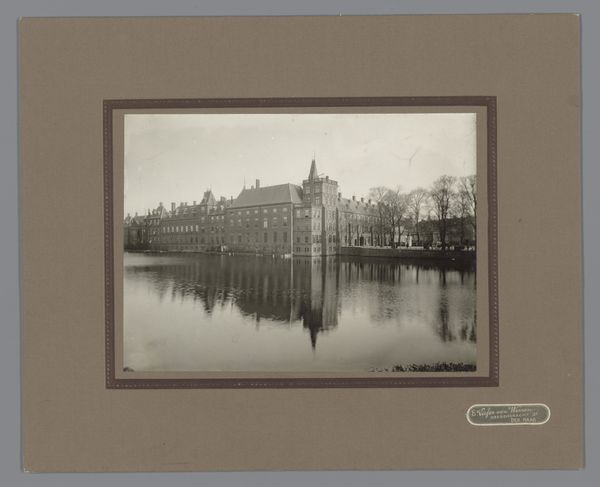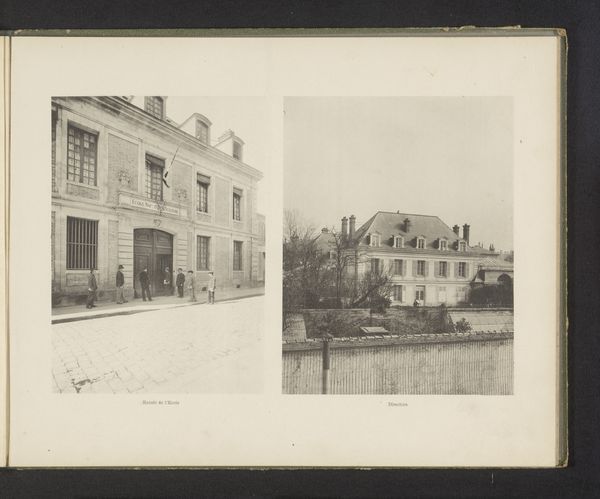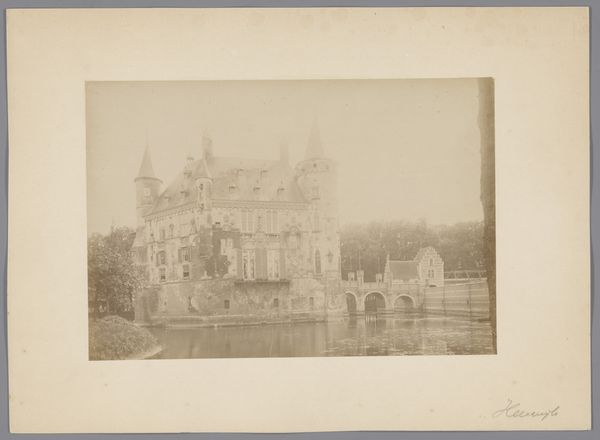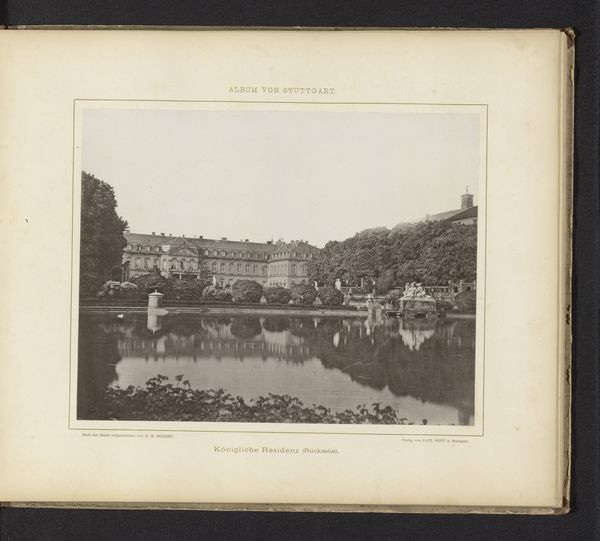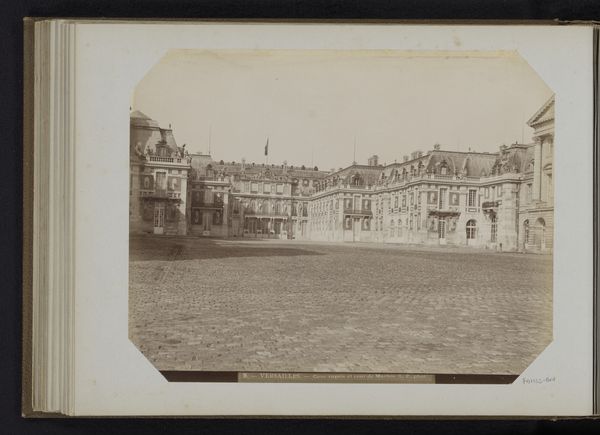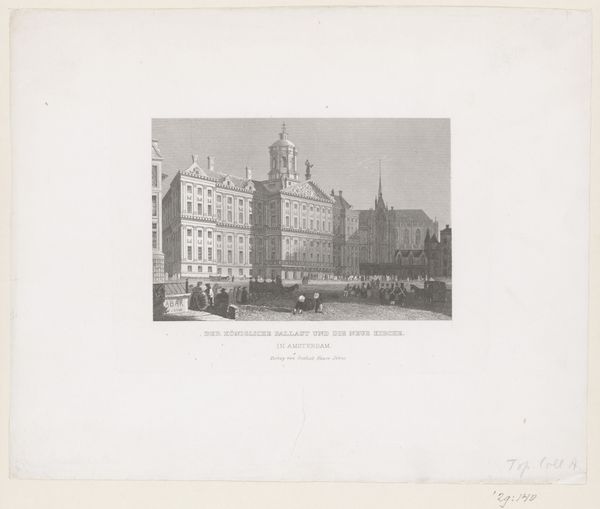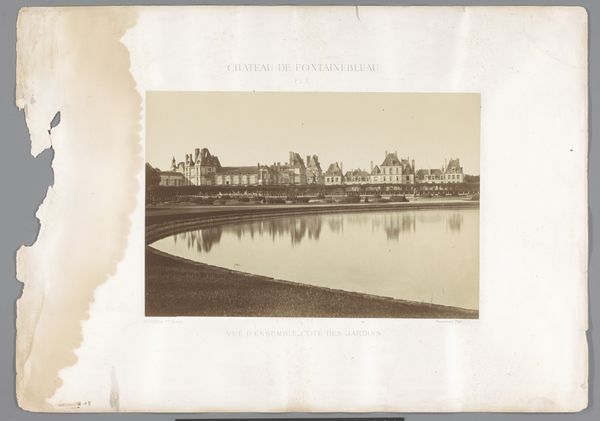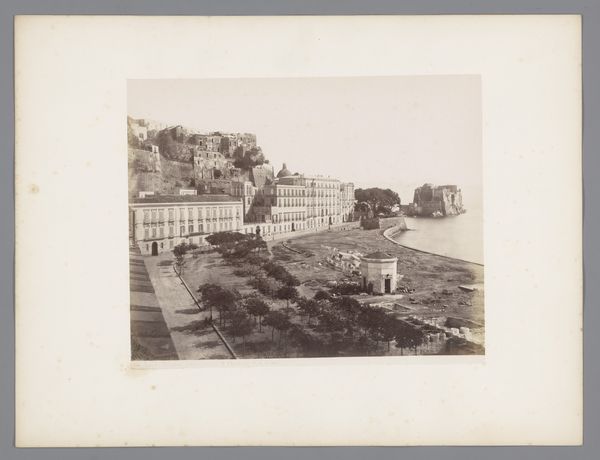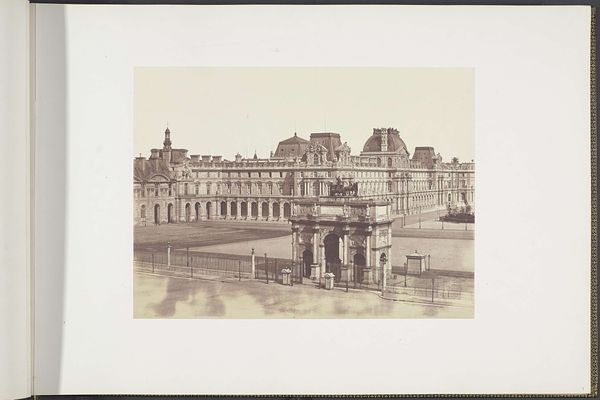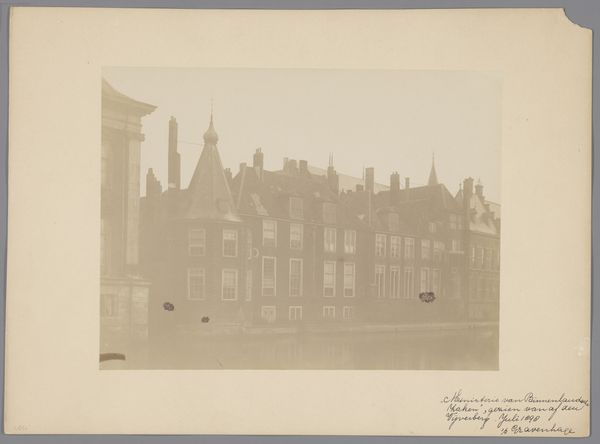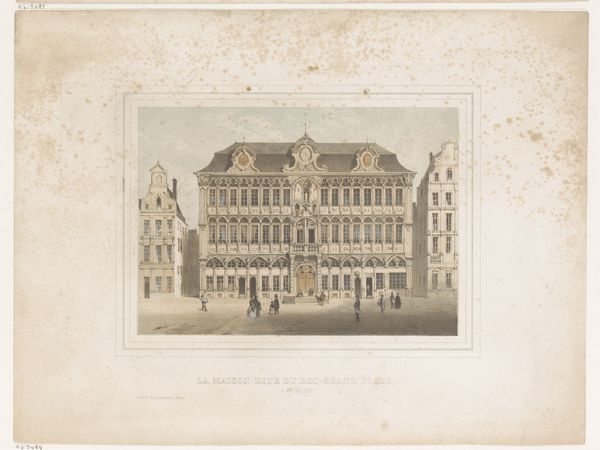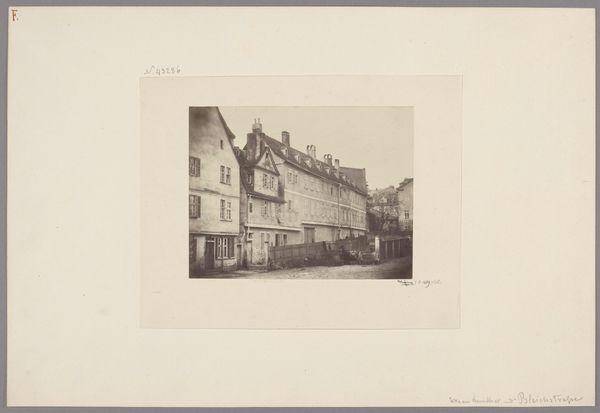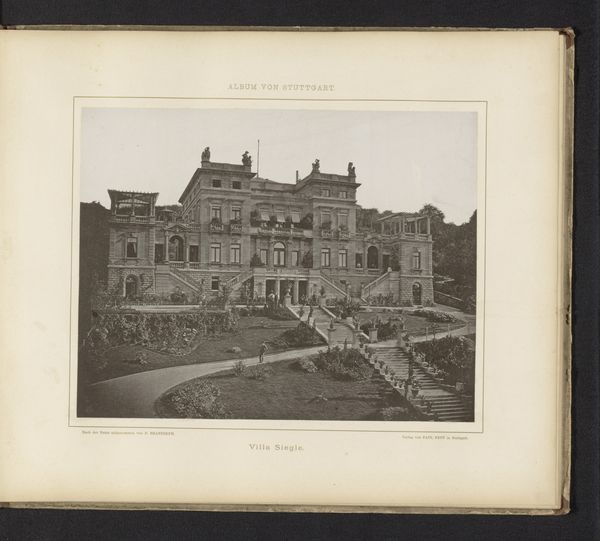
Gezicht op de Cour de la Fontaine van het Kasteel van Fontainebleau, Frankrijk before 1875
0:00
0:00
medericmieusement
Rijksmuseum
print, daguerreotype, photography
# print
#
landscape
#
daguerreotype
#
photography
#
cityscape
Dimensions: height 250 mm, width 362 mm
Copyright: Rijks Museum: Open Domain
Curator: This is an image entitled "View of the Cour de la Fontaine of the Château de Fontainebleau, France," captured by Médéric Mieusement sometime before 1875. Editor: A photograph of subdued grandeur, almost monastic in its greyscale palette. The reflection is so still; it lends the château a kind of doubling, as if reality and image are in silent dialogue. Curator: The daguerreotype and photographic print serve as documents but also as representations molded by Mieusement's decisions. The chosen viewpoint flattens the composition, reducing depth. The composition focuses on symmetry, with the reflected facade providing a strong horizontal anchor. Editor: Right, that controlled stillness must have taken real effort given the limitations of early photography! One wonders what was happening politically during its creation. Was it commissioned as a symbol of power at a time when empires were solidifying? The deliberate staging feels heavy with purpose. Curator: It's fascinating how this print utilizes the water as an artistic tool. The mirroring isn’t merely replication, but instead shifts the building, playing with opacity and light diffusion to challenge ideas of representation and solidity. Notice also how Mieusement guides our eye, strategically positioning that one tree slightly to the left to disrupt perfect symmetry and lend a touch of organic contrast. Editor: Absolutely. These photographic works played a vital role in shaping a globalized culture of travel and documentation, turning architectural landmarks into shareable, visual assets of nation states. Looking at how it's positioned within the collection of the Rijksmuseum makes one think about the ongoing impact of photographic imagery on architectural, national, and colonial discourses. Curator: Considering its tonal range and compositional choices, one can recognize this not just as architectural recording but a consciously structured tableau designed to prompt reflections on both its surface details and on what architectural identity truly represents. Editor: It’s striking how even such early works contain such echoes and foreshadowings of larger ideological structures, isn’t it? A stillness charged with historical implication.
Comments
No comments
Be the first to comment and join the conversation on the ultimate creative platform.
